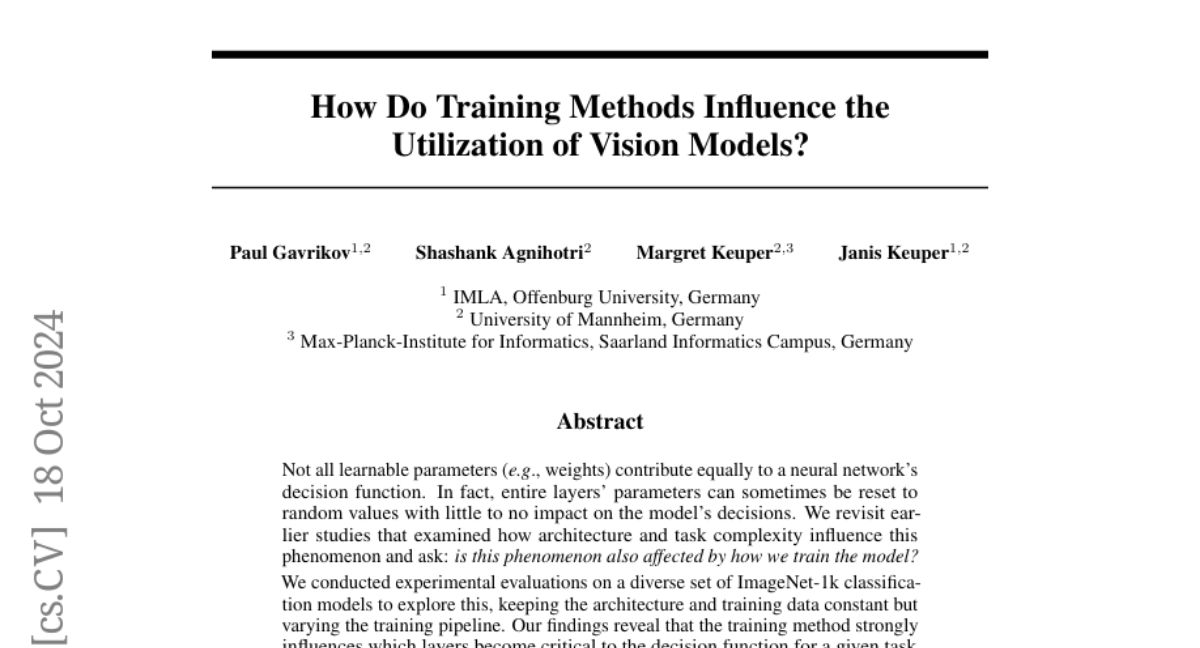How Do Training Methods Influence the Utilization of Vision Models?
Paul Gavrikov, Shashank Agnihotri, Margret Keuper, Janis Keuper
2024-10-21

Summary
This paper explores how different training methods affect which parts of vision models are most important for making decisions, especially in image classification tasks.
What's the problem?
In neural networks, not all parts contribute equally to how decisions are made. Some layers can be changed or even reset without affecting the model's performance much. This raises the question: how does the way we train these models influence which layers are critical for their success? Understanding this could help improve how we design and train models for tasks like image classification.
What's the solution?
The authors conducted experiments on various image classification models using a dataset called ImageNet-1k. They kept the model architecture and training data the same but changed the training methods to see how that impacted which layers were important. They found that different training approaches affected the importance of different layers. For instance, better training methods increased the significance of earlier layers while sometimes neglecting deeper layers. Conversely, some training methods, like adversarial training, showed different trends.
Why it matters?
This research is important because it provides insights into how to train vision models more effectively. By understanding which training methods highlight certain layers, researchers can optimize models for better performance in real-world applications, such as medical imaging or autonomous vehicles, where accuracy is crucial.
Abstract
Not all learnable parameters (e.g., weights) contribute equally to a neural network's decision function. In fact, entire layers' parameters can sometimes be reset to random values with little to no impact on the model's decisions. We revisit earlier studies that examined how architecture and task complexity influence this phenomenon and ask: is this phenomenon also affected by how we train the model? We conducted experimental evaluations on a diverse set of ImageNet-1k classification models to explore this, keeping the architecture and training data constant but varying the training pipeline. Our findings reveal that the training method strongly influences which layers become critical to the decision function for a given task. For example, improved training regimes and self-supervised training increase the importance of early layers while significantly under-utilizing deeper layers. In contrast, methods such as adversarial training display an opposite trend. Our preliminary results extend previous findings, offering a more nuanced understanding of the inner mechanics of neural networks. Code: https://github.com/paulgavrikov/layer_criticality